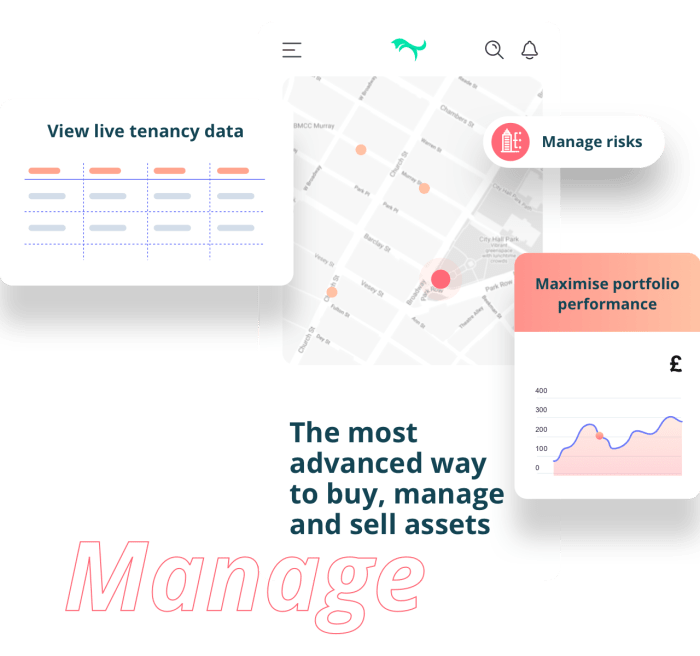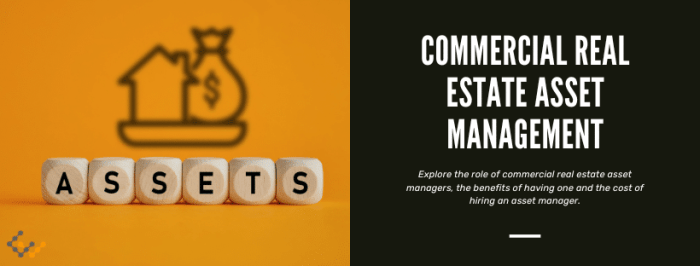Commercial real estate asset management is a complex process, demanding meticulous tracking of various aspects, from financial performance to tenant relations. Effective management is crucial for maximizing returns and minimizing risks. This comprehensive guide delves into the world of commercial real estate asset management software, exploring its functionalities, benefits, and crucial considerations for businesses.
Understanding Commercial Real Estate Asset Management Software
Commercial real estate asset management software (CREAMS) is designed to streamline and automate various tasks associated with owning and managing commercial properties. These systems provide a centralized platform for storing, organizing, and analyzing critical data related to properties, tenants, financials, and maintenance. Modern CREAMS often incorporate advanced analytics and reporting features to provide insightful data for strategic decision-making.

Source: estatespace.com
Key Features of Effective CREAMS
- Property Management: This includes detailed property information, lease agreements, tenant data, and maintenance records. Advanced features might include automated lease renewals and notifications.
- Financial Management: Tracking income, expenses, budgets, and financial reports is critical. CREAMS should allow for detailed financial analysis and forecasting.
- Tenant Relationship Management (TRM): Effective CREAMS will include tools for managing tenant communication, lease administration, and payment processing.
- Maintenance and Repair Management: Centralized maintenance requests, work orders, and vendor management are crucial for smooth property operations.
- Reporting and Analytics: Data visualization and reporting capabilities are essential for performance tracking and strategic decision-making. Advanced analytics can uncover trends and potential issues.
- Compliance and Legal Management: Managing legal documents, regulatory requirements, and compliance procedures can be automated for efficiency.
Benefits of Using CREAMS
Implementing commercial real estate asset management software offers numerous advantages, including improved efficiency, enhanced profitability, and reduced risk. By automating tasks, CREAMS frees up valuable time and resources for other critical activities.
Improved Efficiency and Productivity
Automation of tasks like lease management, invoice processing, and maintenance tracking leads to significant time savings and increased productivity for the asset management team. This allows for more focused attention on strategic decision-making and relationship management.

Source: co.uk
Enhanced Financial Performance
CREAMS provide comprehensive financial insights, enabling accurate forecasting, budgeting, and reporting. This leads to better financial control and improved profitability.
Reduced Risk and Improved Compliance, Commercial real estate asset management software
Automated compliance tracking and management reduce the risk of errors and ensure adherence to regulations. Proper documentation and streamlined processes minimize potential legal issues.

Source: commloan.com
Choosing the Right CREAMS for Your Needs
Selecting the appropriate software depends on several factors, including property portfolio size, specific requirements, and budget. Consider factors like scalability, customization options, user-friendliness, and integration capabilities.
Factors to Consider
- Scalability: The software should be able to accommodate future growth and expansion of your portfolio.
- Customization: Consider the extent to which you need to customize the software to fit your specific needs.
- User-friendliness: A user-friendly interface ensures efficient adoption and utilization by your team.
- Integration capabilities: Integration with other systems like accounting software can enhance data flow and accuracy.
- Budget: Software pricing varies considerably, so consider your budget and choose a solution that fits within your financial constraints.
Frequently Asked Questions (FAQ)
- Q: What is the cost of implementing CREAMS?
A: CREAMS pricing varies based on features, functionalities, and the size of your portfolio. Contact vendors for specific pricing information.
- Q: How long does it take to implement CREAMS?
A: Implementation timelines depend on factors like the complexity of your processes, the size of your portfolio, and the level of customization required.
- Q: What are the potential benefits of integrating CREAMS with other business systems?
A: Integration streamlines data flow, reduces manual entry errors, and provides a more comprehensive view of your portfolio performance.
- Q: How can I ensure data security in CREAMS?
A: Look for CREAMS providers that prioritize data security measures, such as robust encryption and access controls.
Conclusion
Commercial real estate asset management software plays a vital role in optimizing the performance and profitability of commercial property portfolios. By automating tasks, improving financial insights, and streamlining processes, CREAMS empowers property owners and managers to make informed decisions, maximize returns, and minimize risks. The right choice of software is critical to long-term success. Consider your specific needs and choose a solution that fits your business requirements.
Call to Action: Commercial Real Estate Asset Management Software
Ready to streamline your commercial real estate operations? Contact us today to learn more about how CREAMS can benefit your business. We offer customized solutions to meet your unique needs and help you achieve optimal performance.
Note: This article provides general information and is not financial or professional advice. Consult with relevant professionals for specific guidance.
Sources:
- Industry publications (e.g., Commercial Property News)
- Software vendor websites (e.g., specific CREAMS providers)
- Real estate research reports
FAQ Compilation
What are the typical costs associated with implementing commercial real estate asset management software?
Implementation costs vary significantly depending on the software’s features, the size of the property portfolio, and the complexity of integration with existing systems. Pricing models often include subscription fees, customization options, and potential third-party integrations, which should be carefully considered.
How does this software improve tenant management?
The software often includes features to manage lease agreements, track payments, and communicate with tenants. Automated reminders and reporting tools can help reduce administrative burdens and ensure compliance with contractual obligations.
What security measures are in place to protect sensitive property data?
Reputable software providers employ robust security protocols to protect sensitive data. These protocols often include encryption, access controls, and regular security audits to ensure the confidentiality and integrity of the information.